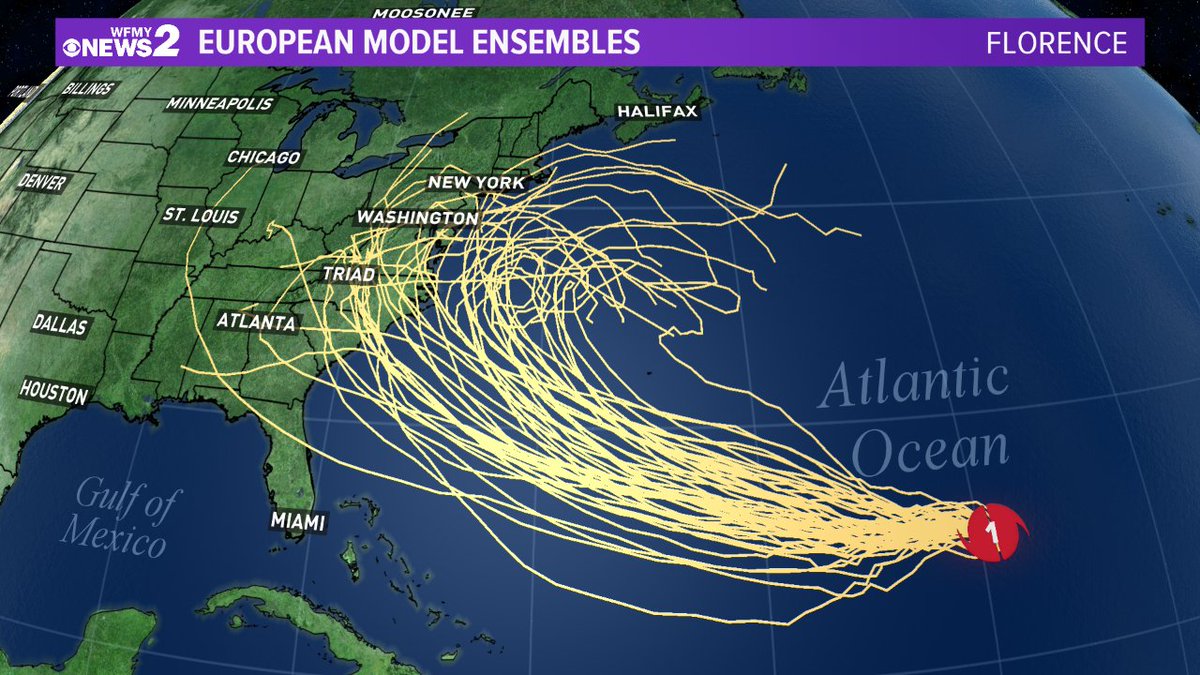Spaghetti Models

Spaghetti models are a type of ensemble forecasting technique used in meteorology to predict the path of tropical cyclones. They were first developed in the 1960s and have since become an essential tool for hurricane forecasting.
Spaghetti models work by running multiple computer simulations of a tropical cyclone’s path. Each simulation uses slightly different initial conditions, such as the storm’s location, intensity, and direction of movement. The resulting ensemble of simulations creates a range of possible paths for the storm, which is represented by a spaghetti-like diagram.
Spaghetti models have been used to predict the paths of hurricanes with increasing accuracy over the years. This is due in part to advancements in computing technology, which have allowed for more complex and realistic simulations. Additionally, the growing complexity of real-world problems, such as climate change, has made it more important to have accurate forecasts of tropical cyclone paths.
Key Factors Driving the Evolution of Spaghetti Models
Several key factors have driven the evolution of spaghetti models over the years. These include:
- Advancements in computing technology: The development of more powerful computers has allowed for more complex and realistic simulations of tropical cyclones. This has led to more accurate forecasts of storm paths.
- The growing complexity of real-world problems: The increasing frequency and intensity of tropical cyclones due to climate change has made it more important to have accurate forecasts of their paths. Spaghetti models are able to provide these forecasts by taking into account the complex interactions between the atmosphere and the ocean.
Applications of Spaghetti Models in Various Fields
Spaghetti models have proven their versatility by finding applications in a wide range of fields, including climate modeling, financial forecasting, risk assessment, and healthcare. Their ability to capture uncertainty and generate multiple plausible scenarios makes them a valuable tool for decision-makers in these domains.
Climate Modeling
In climate modeling, spaghetti models are used to simulate the complex interactions within the Earth’s climate system. By running multiple simulations with slightly different initial conditions, these models generate a range of possible future climate scenarios. This information is crucial for policymakers and scientists to assess the potential impacts of climate change and develop mitigation and adaptation strategies.
Financial Forecasting
In financial forecasting, spaghetti models are employed to predict the behavior of financial markets. By considering various factors such as economic data, market trends, and investor sentiment, these models generate a range of possible market outcomes. This helps financial institutions make informed decisions about investments, risk management, and financial planning.
Risk Assessment
In risk assessment, spaghetti models are used to evaluate the likelihood and potential consequences of various risks. These models incorporate data on past events, industry trends, and expert opinions to generate a range of possible risk scenarios. This information is essential for organizations to prioritize risks, allocate resources effectively, and develop risk mitigation plans.
Healthcare, Spaghetti models
In healthcare, spaghetti models are used to predict the progression of diseases, evaluate the effectiveness of treatments, and optimize patient care. By simulating different treatment options and patient characteristics, these models generate a range of possible outcomes. This helps healthcare professionals make informed decisions about treatment plans, resource allocation, and patient management.
Advantages and Limitations of Spaghetti Models

Spaghetti models offer various advantages, including their ability to handle large and complex datasets, their flexibility in adapting to different scenarios, and their computational efficiency. However, they also have limitations, such as their sensitivity to input data, their potential for overfitting, and their challenges in interpretability.
Strengths
- Handling large and complex datasets: Spaghetti models can handle large and complex datasets, making them suitable for applications in various fields. They can process and analyze data with millions of data points and hundreds of features, providing insights that may not be easily obtainable from smaller or less complex datasets.
- Flexibility: Spaghetti models are flexible and can be adapted to different scenarios. They can be customized to specific problems or domains, making them versatile tools for data analysis and modeling.
- Computational efficiency: Spaghetti models are computationally efficient, allowing for fast and scalable data processing. This efficiency is particularly beneficial when dealing with large datasets or complex models that require extensive computations.
Limitations
- Sensitivity to input data: Spaghetti models can be sensitive to input data, meaning that small changes in the input data can lead to significant changes in the model’s output. This sensitivity requires careful data preparation and validation to ensure the model’s robustness.
- Potential for overfitting: Spaghetti models have the potential for overfitting, which occurs when the model learns the specific details of the training data too closely and fails to generalize well to new data. Overfitting can lead to poor performance on unseen data.
- Challenges in interpretability: Spaghetti models can be complex and difficult to interpret, making it challenging to understand the underlying relationships and decision-making processes within the model. This lack of interpretability can hinder the understanding and trust in the model’s predictions.
Spaghetti models can give us a glimpse into the future, but where is beryl headed? Where is beryl headed ? Only time will tell. But one thing is for sure, spaghetti models will continue to be a valuable tool for understanding the world around us.
Di spaghetti models deh show we di different paths weh di hurricane might tek. Di models dem did show dat Hurricane Beryl did a go pass Jamaica, but it did end up going further west. Di spaghetti models dem can be useful, but dem not always accurate.
Dem can give we a general idea of where di hurricane might go, but we need to stay updated on di latest forecasts and warnings.